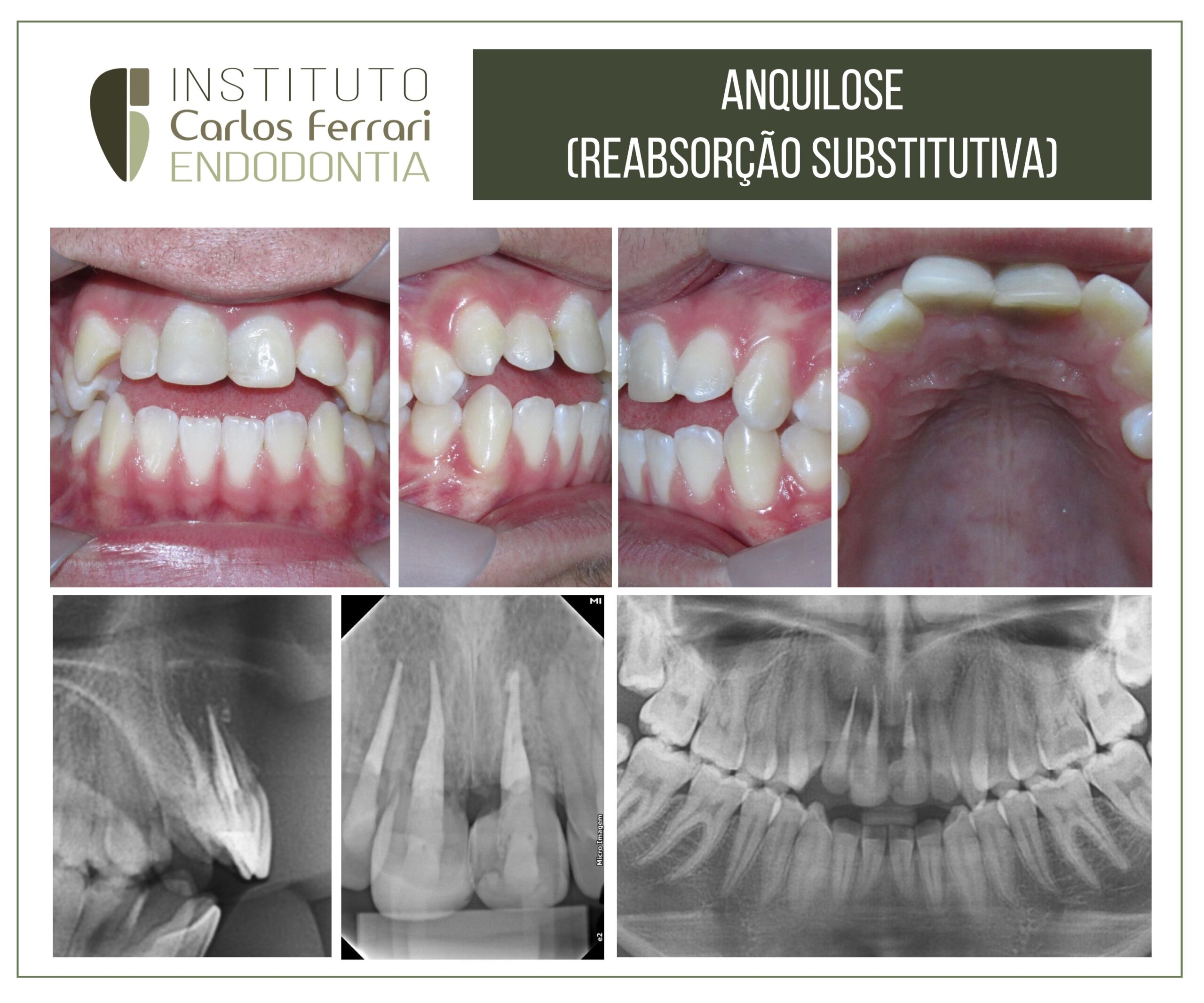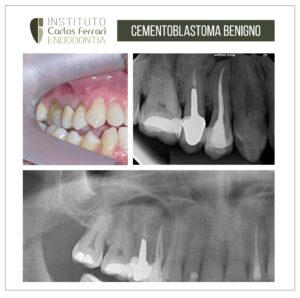Anquilose dentária.
Paciente 17 anos, com anquilose avançada nos anteriores superiores e histórico de avulsão e reimplante após trauma com cerca de 11 anos. O caso serve de alerta para que se faça um planejamento e avaliação acurada em caso de reimplantação de dentes avulsionados em pacientes em fase de desenvolvimento ósseo.
Anquilose dentária. in: Machado, Ricardo. Endodontia: Princípios Biológicos e Técnicos. Disponível em: Grupo GEN, Grupo GEN, 2022.
Reabsorções dentárias internas substitutivas
Ocorrem a partir de reações inflamatórias crônicas ou necrose parcial do tecido pulpar, seguida de infecção. A dentina é reabsorvida e a polpa é substituída por tecido mineralizado metaplásico semelhante a osso ou cemento (boxe “Definição e considerações relevantes sobre metaplasia”). Assim como nas reabsorções dentárias internas inflamatórias, os principais fatores etiológicos também são os traumatismos.
Existem duas hipóteses para a origem do tecido metaplásico associado a reabsorções dentárias internas substitutivas. A primeira é que ele é produzido por células-tronco presentes na polpa apical vital, em resposta à reabsorção (processo semelhante à formação de dentina terciária ou reacional). A segunda sugere que ambos (tecido de granulação e mineralizado) originam-se do sistema vascular ou periodonto (gênese não pulpar).
Dentes acometidos por reabsorções internas substitutivas normalmente são assintomáticos e vitais. Pode haver necrose da polpa em casos de comunicação (ver adiante). Radiograficamente, observa-se aumento de volume de uma área específica da cavidade pulpar. A reconstituição contínua do tecido ósseo às expensas da reabsorção dentinária é responsável pela radiopacidade da região. Após algum tempo, o processo reabsortivo é interrompindo e ocorre a obliteração do canal radicular
Existem duas hipóteses para a origem do tecido metaplásico associado a reabsorções dentárias internas substitutivas. A primeira é que ele é produzido por células-tronco presentes na polpa apical vital, em resposta à reabsorção (processo semelhante à formação de dentina terciária ou reacional). A segunda sugere que ambos (tecido de granulação e mineralizado) originam-se do sistema vascular ou periodonto (gênese não pulpar).
Dentes acometidos por reabsorções internas substitutivas normalmente são assintomáticos e vitais. Pode haver necrose da polpa em casos de comunicação (ver adiante). Radiograficamente, observa-se aumento de volume de uma área específica da cavidade pulpar. A reconstituição contínua do tecido ósseo às expensas da reabsorção dentinária é responsável pela radiopacidade da região. Após algum tempo, o processo reabsortivo é interrompindo e ocorre a obliteração do canal radicular.
Anquilose dentária.





